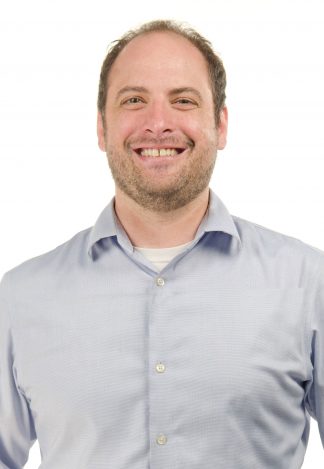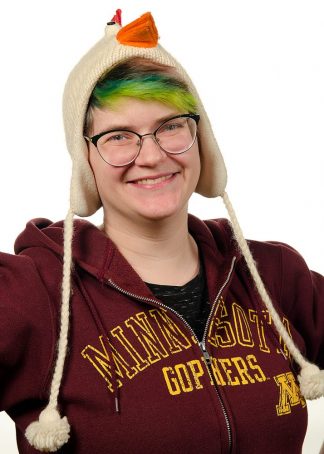By Allison Campbell-Jensen
Over the many years that Emi Ito, Professor of Earth and Environmental Sciences, has been teaching critical thinking to her students, she has moved her group projects from posters to PowerPoints to video presentations. To help guide students through the process of becoming videographers this semester, she has relied on a team of four — “I call them project mentors.”
“I really need Scott [Spicer] and Charlie [Heinz]’s expertise,” she says. Spicer is head of Media Outreach for the Libraries, and Heinz is a Multimedia Specialist. Carolyn Bishoff, Earth Sciences Librarian, offers students systematic ways to search for the information they want. And Matt Luskey of the Center for Writing has been “indispensable,” Ito says, “ for commenting on what needs to be there from the beginning to grab students’ attention.”
On their part, the team has been enthusiastic about being integrated with the students as they learn.
Getting started

Scott Spicer
Ito had contacted Spicer a few years ago.
“She wanted to have her students create videos critically assessing established beliefs of how earth-related events contributed to history that may not be true,” he says. “The students are being trained as scientists to critically reassess what the historical narrative has been.” Ito also wants students to address specific audiences — for this semester, that is high school seniors.
“The students are encouraged to put down what the accepted narrative has been and what the emerging narrative is, in part due to the changes in methodology,” Spicer says. One group is looking at how the Kingdom of Angkor changed with climate change; another, what was the impact on ancient megafauna such as mastodons.
The team also had to make adjustments for the pandemic. “We’re not relying as much on moving images and the students aren’t relying as much on video interviews,” Spicer says, noting that you can’t interview a mastodon. “For this report-based documentary style or investigation style of video, it’s a deep blend of research instruction and media instruction.”
The videos lean toward using still images and voice-over narrative. Because of the many still images, Heinz says, the team has had to reinforce ideas of copyright, fair use, Creative Commons licenses, and royalty-free databases like Storyblocks.
Spicer suggests when there is less reliance on subject expert interview footage and third party video clips to tell their stories, students often conduct deeper background research to create more script, still image and voice-over driven pieces. He, Heinz, and Luskey work closely with the students on their narrative. “What are the key points? What story do you want to tell?”
Steps along the way

Carolyn Bishoff
Bishoff offers the students guidance in literature searching, including not only earth science but also all the disciplines their topic touches, such as anthropology, archaeology, and climate change. And her support has been important. For one class meeting, she was supposed to give a 15-minute presentation on primary sources. “It ended up being the whole class,” she says. “They are undergraduates who had no experience with primary sources.”
She appreciates that she and the other mentors are immersed in a course-integrated experience through Canvas and meeting with students. By continuing to meet, she’s able to see the outcomes of the students’ searches. “It’s so gratifying to be part of the process and so much fun to hear their reports,” Bishoff says. “It’s really great when students reach out to me, too.”
Heinz also is enthusiastic about connecting. “Every time we go to the class, I tell them ‘Book an appointment with me.’ Because even when we use class time to talk about videos, they are in five groups, so there’s hardly enough time in lecture to get into the practical details,” he says.

Charlie Heinz
In a discussion about a storyboard for a video on how anthropogenic climate conditions have impacted the Syrian civil war, Heinz questioned using a generic image of an explosion. “What does this really contribute to the point you’re making?” he asked the students. Luskey added that images ought not to reflect but rather complement the narrative, which has become a principle for discussions.
Growing closer, remotely
“I like that the students are gaining media experience even though they are remote,” Spicer says. “I like that the instructors are continuing to give a lot of media assignments even though we’re not really on campus.” Indeed, for the project mentors, it has been easier than pre-pandemic to meet with the class over Zoom as a team.
Says Bishoff: “It’s been really fun to work on a team like this. As the project has gone on, we have been able to riff off each other and discuss things. We all bring a crucial piece of this.” And ultimately, the students benefit.




